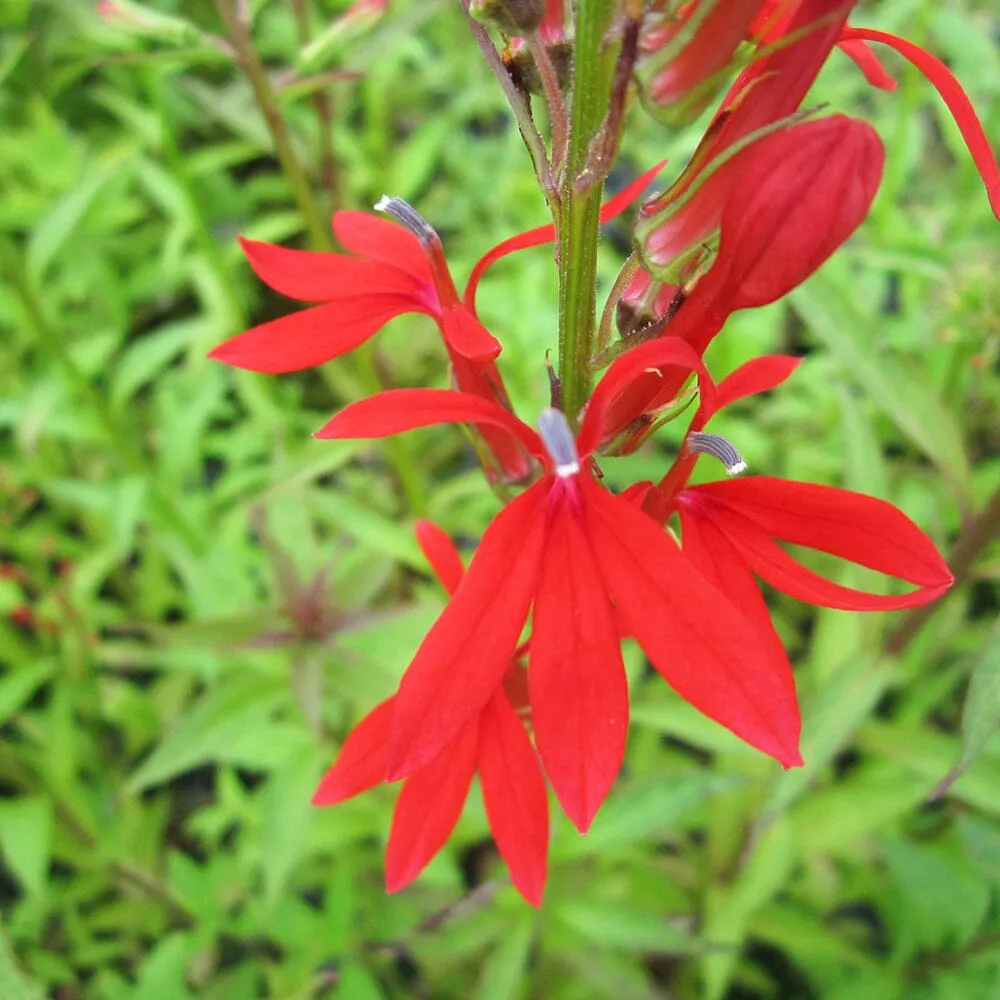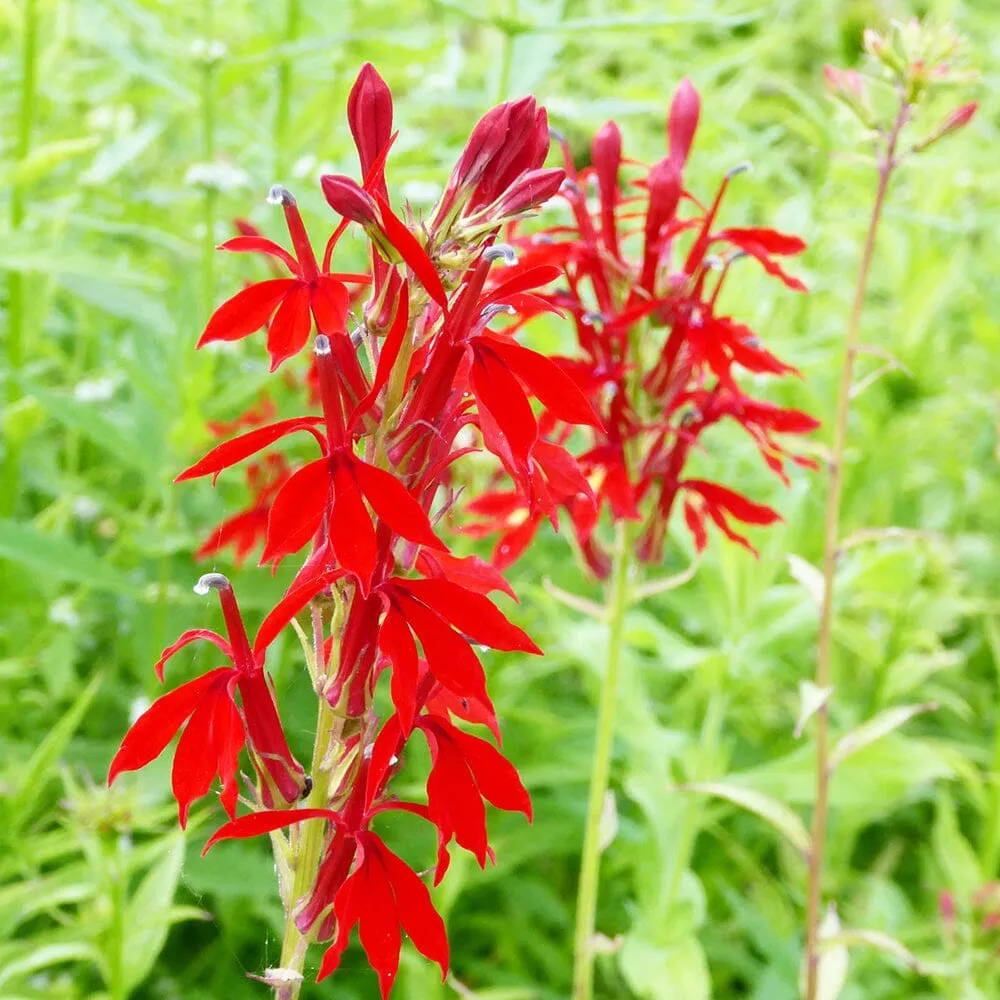Lobelia cardinalis, commonly known as Cardinal Flower, is a striking perennial plant native to North America. It is highly valued for its vibrant red flowers and attractive foliage. Here's a detailed description and care guide for Lobelia cardinalis:
Description:
Lobelia cardinalis features upright stems that can reach a height of 2 to 4 feet (60 to 120 cm). The foliage is lance-shaped, deep green, and arranged in an alternate pattern along the stems. The real showstopper of this plant is its stunning flowers. The tubular, cardinal red blooms are arranged in dense, terminal spikes that rise above the foliage. The flowers attract pollinators, including hummingbirds and butterflies, making it a valuable addition to pollinator gardens or naturalized areas. In addition to the vibrant red variety, there are cultivars available that offer variations in flower color, such as pink or white.
Care Guide:
Lighting: Lobelia cardinalis thrives in partial shade to full sun. It prefers a location with at least 4 to 6 hours of direct sunlight per day. However, in hotter regions, providing afternoon shade can help protect the plant from scorching. If grown in full shade, the plant may produce fewer flowers and have a less compact growth habit.
Water: Lobelia cardinalis prefers consistently moist soil conditions. It thrives in moist to wet soil and can even tolerate periods of temporary waterlogging. Ensure the soil remains evenly moist throughout the growing season. Water deeply when the top inch of soil feels dry to the touch. Regular watering is particularly important during hot, dry periods. Avoid allowing the soil to dry out completely, as this can cause stress and decrease flowering.
Soil: Lobelia cardinalis prefers rich, humusy soil that is well-draining. It can tolerate a range of soil types, including loam, clay, or sandy soil, as long as it is kept consistently moist. Amending the soil with organic matter, such as compost or well-rotted manure, before planting can improve its fertility and moisture retention capabilities.
Temperature: Lobelia cardinalis is hardy in USDA hardiness zones 3-9. It is adaptable to a wide range of temperatures but performs best in moderate climates. It can tolerate cool temperatures and is well-suited for temperate or woodland gardens.
Fertilizer: Lobelia cardinalis generally does not require heavy fertilization. However, a light application of balanced, slow-release fertilizer in early spring can promote healthy growth and flowering. Avoid excessive use of nitrogen-rich fertilizers, as they can promote excessive foliage growth at the expense of flowers.
Maintenance: Lobelia cardinalis requires regular maintenance to ensure optimal growth and flowering. Remove any spent flower spikes to encourage continuous blooming. Additionally, deadheading can prevent self-seeding and redirect energy to the development of new blooms. Cut back the stems to ground level in late fall or early spring to promote fresh growth in the following season.
Mulching: Applying a layer of organic mulch, such as shredded bark or compost, around the base of the plant can help conserve moisture, suppress weed growth, and regulate soil temperature. Mulching is particularly beneficial during the establishment period or in regions with extreme temperatures.
Pests and Diseases: Lobelia cardinalis is generally resistant to pests and diseases. However, it may occasionally attract slugs, snails, or aphids. Monitor the plant for any signs of pest damage and take appropriate measures if necessary. Additionally, provide adequate air circulation and avoid overcrowding to prevent the development of fungal diseases.
By following these care guidelines, you can enjoy the vibrant and showy blooms of Lobelia cardinalis in your garden. Adjust the care routine based on your specific growing conditions and monitor the plant for any signs of stress or pest infestation. With proper care, Lobelia cardinalis will provide a stunning display of color and attract beneficial pollinators to your outdoor spaces.
















